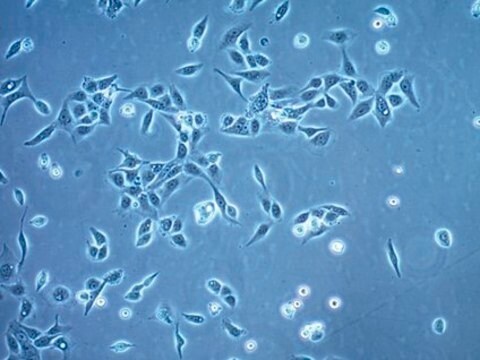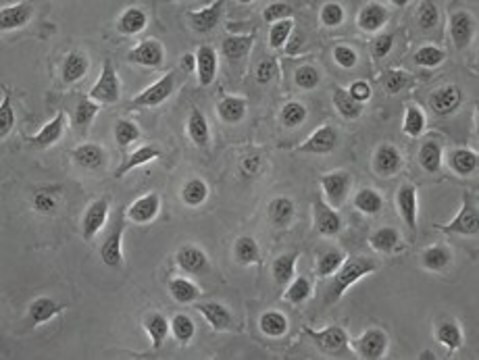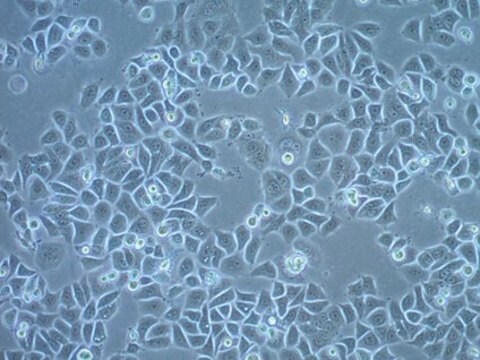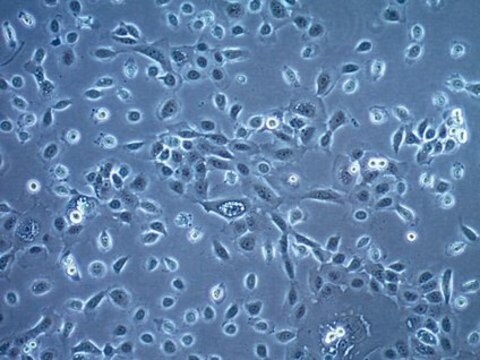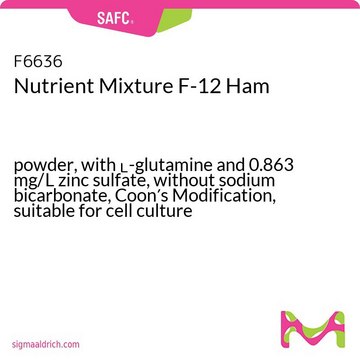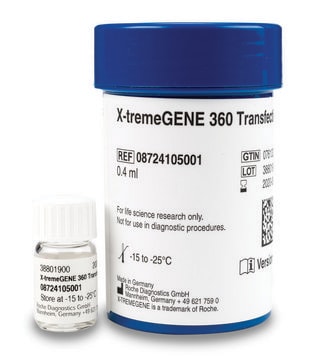H357
6092004, human mouth, Polygonal
Anmeldenzur Ansicht organisationsspezifischer und vertraglich vereinbarter Preise
Alle Fotos(1)
About This Item
UNSPSC-Code:
41106514
Empfohlene Produkte
product name
H357, 06092004
Biologische Quelle
human mouth
Wachstumsmodus
Adherent
Karyotyp
Not specified
Morphologie
Polygonal
Produkte
Not specified
Rezeptoren
TGFbeta type I receptor, TGFbeta II receptor, TGFbeta III receptor
Methode(n)
cell culture | mammalian: suitable
Relevante Krankheit(en)
cancer
Versandbedingung
dry ice
Lagertemp.
−196°C
Ursprung der Zelllinie
Human oral squamous cell carcinoma, tongue
Beschreibung der Zelllinie
Established from a squamous cell carcinoma (SCC) of the tongue (20mm) of a 74 year-old male patient. STNMP stage I, well differentiated, node negative tumour. Mutant p53, codon 110 exon 4, G to A; the previously reported mutant Ha-ras status of this cell line: codon: 13, G to A, codon 61, A-G is under investigation. This cell line is highly responsive to TGF (Transforming growth factor )-β and undergoes epithelial to mesenchymal transition. It expresses high levels of TGF-β1. Fahey et al (1996). Tumourigenic in athymic nude mice on subcutaneous injection and non-tumorigenic on orthotopic injection. Haplotype information: A*02,A*31; B*40,B*44; Cw*03,Cw*05
Nährmedium
DMEM:HAMS F12 (1:1) + 2mM Glutamine + 10% Foetal Bovine Serum (FBS) + 0.5 ug/ml sodium hydrocortisone succinate
Subkultur-Routine
Split sub-confluent cultures (70-80%), approximately every 5-6 days, 1:8 to 1:10 using 0.05% trypsin/EDTA; 5% CO2; 37°C. Suggested seeding density 5 x 1000 cells/cm2. Cells can take approximately 10 minutes to detach, an alternative is to trypsinise 2
Sonstige Hinweise
Additional freight & handling charges may be applicable for Asia-Pacific shipments. Please check with your local Customer Service representative for more information.
Haftungsausschluss
This cell line has special release conditions: Commercial organisations are required to complete the ′Cell Line Release Authorisation for Research Use in Commercial Organisations′ release conditions form.
Analysenzertifikate (COA)
Suchen Sie nach Analysenzertifikate (COA), indem Sie die Lot-/Chargennummer des Produkts eingeben. Lot- und Chargennummern sind auf dem Produktetikett hinter den Wörtern ‘Lot’ oder ‘Batch’ (Lot oder Charge) zu finden.
Besitzen Sie dieses Produkt bereits?
In der Dokumentenbibliothek finden Sie die Dokumentation zu den Produkten, die Sie kürzlich erworben haben.
Unser Team von Wissenschaftlern verfügt über Erfahrung in allen Forschungsbereichen einschließlich Life Science, Materialwissenschaften, chemischer Synthese, Chromatographie, Analytik und vielen mehr..
Setzen Sie sich mit dem technischen Dienst in Verbindung.
